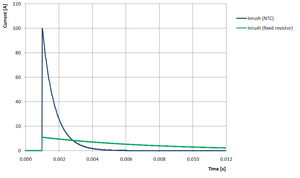
- Home
- Products
- DC/DC Converter Railway Input: 24 V, 36 V, 72 V, 110 V - Chassis mount.
- DC/DC Converter Railway Input: 24 V, 36 V, 72 V, 110 V - Open frame.
- DC/DC Converter Railway Input: 24 V, 36 V, 72 V, 110 V - PCB Mount.
- DC/DC Converter Railway Input: 24 V, 36 V, 72 V, 110 V - DIN Rail.
- DC/DC Converter Railway Input: 24 V, 36 V, 72 V, 110 V - 19" Eurocard.
- DC/DC Converter Railway Input: 24 V, 36 V, 72 V, 110 V - 16.8 kVAC Isolation.
- DC/DC Converter Railway Input: 750 V, 1500 V.
- AC/DC Converter Railway Input: 115, 230 VAC - Chassis mount - Open frame - DIN Rail.
- DC/DC and AC/DC Converter Custom.
- DC/DC and AC/DC Converter Retrofit.
- DC/DC and AC/DC Converter Medical.
- UPS Uninterruptible Power Supply.
- USB Charger Railway.
- Applications
- Resources
- Active Inrush Current Limiter.
- Operating temperature -50°C.
- Galvanic isolation up to 16.8 kVAC.
- Insulationtest DC-DC Converter EN/IEC 60950-1 and IEC 62368-1.
- Mechanics.
- Power Boost - double output current at overload and short circuit.
- Circuit Breaker for DC-DC Converter – how to select.
- Power Modules vs. Complete Power Supply Units.
- Standards
- About intreXis
- News
- Contact

intreXis AG Active Inrush Current Limiter

At the input of each power-supply, bulk capacitors are needed for following reasons:
- Bypassing of converter-stage.
- EMC-filtering.
- Holdup time: Short interruptions of the input voltage supply do not cause any equipment failure (class S2 according to EN50155).
At power-supply turn-on, the bulk capacitors of the power-supply are completely discharged. The equivalent series resistance of the bulk-capacitors is way below 1 Ohm. This combination results in huge charging currents at power-supply turn-on.
These inrush-currents can reach hundreds of amperes, especially at higher input voltages (e.g. 110V-battery). The high inrush current can trigger a circuit breaker or burn a fuse unless you take precautions.
Classic solution to limit the inrush current by using NTC
Most power supply manufactorers use NTC's to limit the inrush-current. At the first power-supply turn-on, the NTC is cold and has a high resistance, which limits the current effectively. After a relatively short time, the NTC heats up due to its own internal dissipation and becomes low-resistant. Therefore, the power-dissipation during normal operation is reduced.
Advantages:
- Simple
Disadvantages:
- The effectiveness of this solution is very dependent on the ambient temperature: At high ambient temperatures, the inrush-current might not be limited sufficiently and at low temperatures, startup of the power-supply is not guaranteed because the NTC limits the current excessively (example: see table below with a 5 Ohm-NTC).
- At short interruption of the input-voltage (couple of 100 ms) the input capacitor is discharged but the NTC remains still hot and does not limit the current.
- The NTC dissipates and reduces the efficiency.
- During normal operation of the power-supply, the NTC heats up until it reaches steady state (approx. 110 °C). Therefore, the NTC heats up adjacent circuitry and the power-supply unnecessarily.
Ambient Temperature | NTC-resistance at turn-on | Inrush-current @ 110 VDC |
-40 °C | 68 Ohm | 1.6 A |
-20 °C | 27 Ohm | 4.1 A |
0 °C | 12 Ohm | 9.2 A |
+25 °C | 5.0 Ohm | 22 A |
+50 °C | 2.4 Ohm | 46 A |
+70 °C | 1.4 Ohm | 79 A |
intreXis AG active inrush current limiter technology
intreXis uses a fixed resistor to limit the inrush-current which can handle safely the high energy during the charging of the input capacitors. After the input capacitors have been charged, the resistor is bridged with a very low-resistant active component. When an interruption of the input-voltage discharges the input-capacitors, the active bridging component is deactivated and the inrush-current is limited again by the fixed resistor.
Advantages:
- The effectiveness of the solution is independent of the ambient temperature. It avoids false circuit breaker tripping and guarantees proper start-up of the power-supply.
- At short interruption of the input-voltage (couple of 100 ms) the input capacitor is discharged, the bridging component deactivated and the inrush-current is limited again by the fixed resistor.
- The active bridging component dissipates much less than the NTC and does not heat up the power-supply. The efficiency of the converter remains high.
Disadvantages:
- More complex.
The advantages of the inrush-limiter technology by intreXis outweigh the higher complexity of the circuit. The effectiveness and robustness of the circuit have been proven by field-experience and severe tests in the EMC-laboratory.
Download the intreXis Whitepaper SOLUTIONS TO LIMIT INRUSH-CURRENT
About Intrexis
Power Supplies for Railway Applications
Driven by our passion for technology and performance, here at intreXis, we are constantly researching ways to develop more efficient and improved solutions for our products. That is why intreXis Power Supplies now provides the most complete portfolio for railway applications on the market today.

